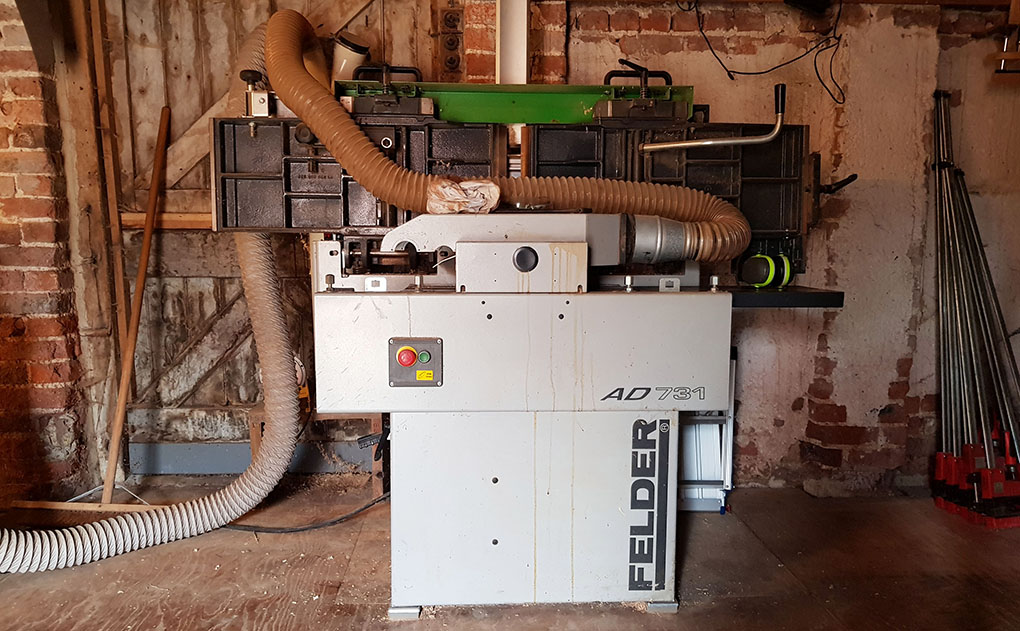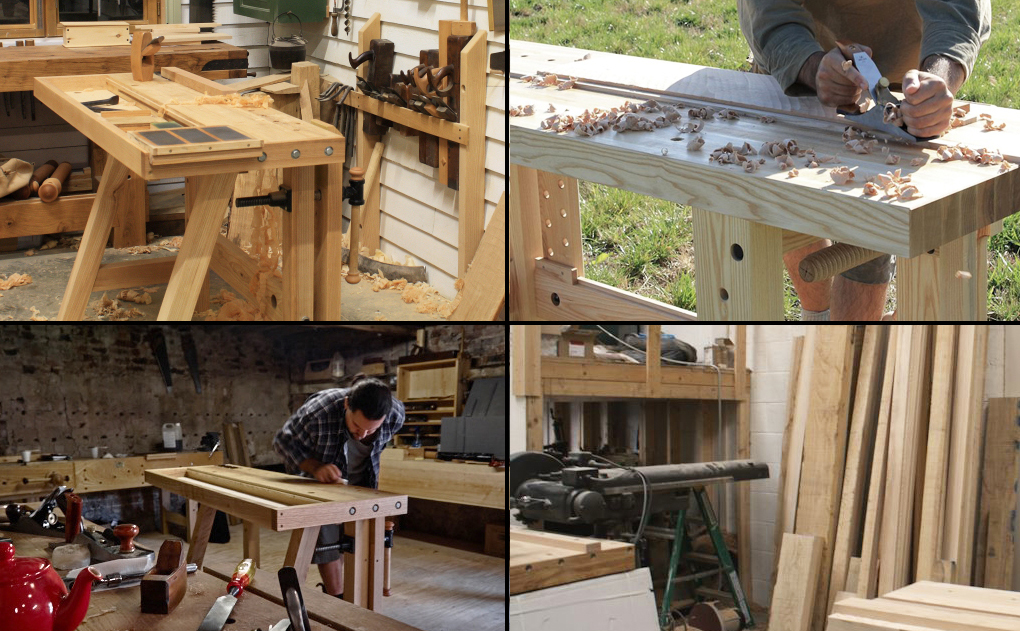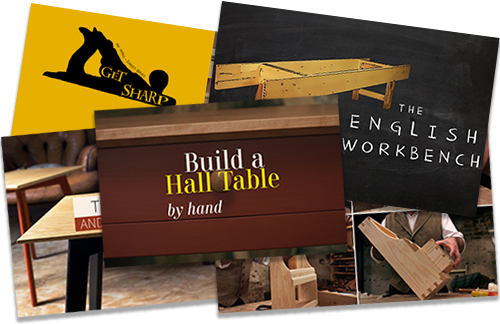When I was younger I did a stint working on new builds, doing truss roofs with my old man. I learnt a lot through the process; things about wood, things about building, and more than I could hope to know about my Dad. Another thing which I learnt could only be appreciated on reflection…
When I started out we’d do the job between the two of us with little more than hammer and nails. His experience and knowledge made us quick. We’d do a good job and get paid well for an honest days work.
Before long nail guns became common place on the building site and through making the investment early some of our competition could complete the roof in half the time. They could build two truss roofs a day and were quids in!
This must have worked out well for them until everyone else followed suit and became equally as quick. It didn’t take long for the prices for roofing to be driven right down.
We now needed to get twice as much work just to earn the same amount. I watched in a very short space of time how this progress with just simple site tools pushed many skilled hands out of work. I’m not suggesting it was as extreme as bringing tractors to the farm but this was something that I could see happening right in front of me. As ever it’s a two sided coin, and despite my love of hand tools I’ve often written about my need and appreciation for my machines and some power tools. There’s this attitude though which I can never imagine will change but I think it should, and that’s the notion that we should always be moving with the times because old ways are outdated and slow.
As ever it’s a two sided coin, and despite my love of hand tools I’ve often written about my need and appreciation for my machines and some power tools. There’s this attitude though which I can never imagine will change but I think it should, and that’s the notion that we should always be moving with the times because old ways are outdated and slow.
Keeping up-to-date is good but we should be well aware from experience that moving forward often results in putting people out of work and loosing skills. New fandangled devices will generally follow the same trend and drive down the price for everyone eventually. Sometimes it may just make more sense to keep it simple and keep everyone in work.
Fortunately some things do come round full circle and my old man can stick stubbornly with his bag of tools and do alright by it. Many joiners will invest in a multitude of power tools so there’s one for every job but these are a serious investment and are a lot to maintain – that has to reflect in their prices. By contrast the old tools will keep on going and the skills and knowledge help find a fast solution to any conundrum.
I’ve seen my old man hang doors and I’m pretty confident he could give anyone a run for their money; he’d have it all morticed out with his chisel in the time it could take to set up a fancy jig.
The Domino is a pretty expensive tool which has kept it fairly niche up until now. Eventually though other manufacturers will be able to make them and at that point there’s no doubt that the price will plummet – will we be saying goodbye to the mortice and tenon?

![Simple Work Holding For Ploughing Grooves [Without a Tail Vice]](https://www.theenglishwoodworker.com/wp-content/uploads/2022/07/workholding-without-tail-vice-copy.jpg)



I think the secret of buying “modern tooling” is to do a lot of research before you buy, they really do cut down the preparation time on some jobs, but to buy a CNC machine, like a friend of mine did, when you only ever do one off jobs, is a very ineffective way of spending a lot of money (as he is finding out now ). I think that if you living depends on making one off’s you are still better using simple power tools to get you to the hand fitting point much quicker, it is really a question of quantity of items that you need to produce. There is also a premium in selling a “hand made ” item, just look at Morgan cars.
Chris,
France.
I could not agree more. a lot has changed in the last 30 years since I have been working.
I think I caught the back end where hand tools were still being used on site. Now I doubt many could hang a door with a jack plane, yankee screwdriver, and chisels and mallet, and brace and bit .
The yankee screwdriver… I forgot about that one. I’ve got one somewhere so I’ll have to dig it out now you’ve brought it up! A casualty of the cordless drill.
Indeed Richard.
My Yankee is still in the tool rack, and is used now and then. In pre-cordless days, I often used the Yankee bits in the chuck of my Stanley-Bridges electric drill. It made fixing studs to walls a breeze, but there is and always was, always a place for the Yankee!
Cheers
John
Interesting post Richard. I think more people are wanting to learn hand tool skills than ever before, thanks to people like your self, and Paul Sellers , etc.
On the other hand time is money, and people want things faster and cheeper, and most are not bothered how much skill went into making it. Sad but true.
Its great people still want to learn these skills, it is also great people still have these skills to pass on. Could you make a living using these skills, I think it would be very hard in this day and age, it would be a nice paying hobby though.
Bottom line for me is we have to keep them alive, and pass them on to anyone willing to learn.
I just cringe when I see a CNC on a blog cutting out panels or carving a design…Now some with no carving ability can produce furniture with carvings and people assume the person is a craftsman wood carver..when I see the CNC on their blog thats the end of my relationship with that blog!!!!!!!!!
I think tools like the Domino will probable mean mortise and tenon joints will come more common place than say screw pocket joinery. I love my mortise chisels and use them frequently, but I would surly love to have a Domino.
Ah. The old ways. For most jobs, my go to tools are still cordless screwdriver (yankee or traditional wrist powered… the battery jobs have a cord on the charger), hand saw for cutting off, files and hacksaw for much metal work. Some things require the more modern way, though. A lot of jobs are not even possible without the welder, or without the battery impact driver (sheet metal siding, for example) or the motorized metal turning lathe. Even jobs that harken back to a lost era, such as a reproducion timber framing shop I helped with.
My youth was spent as a plumber’s apprentice–to my dad, like you. I learned how to join cast iron pipes using oakum and molten lead. Water-supply piping was all done using galvanized iron pipe that had to be threaded. If we still had to do plumbing with those methods, we would need 3 times as many plumbers, and the cost of a new house would be increased significantly.
I remember carpenters who, when air guns first began showing up, swore they’d never have one. They all went over to air guns later.
Same with the advent of copper pipe in the ’70’s–many plumbers said they wouldn’t use it in a doghouse. Little did they think that even copper would be displaced by PEX in USA homebuilding.
I have a Domino, but I still use my mortise chisels for some things–but, then again, I’m not making my living at woodworking, so I enjoy the luxury of doing things according my mood.
I just started getting into hand tools about a year ago. More and more I’m finding that I use a combination of hand and power tools. For example, on some pieces I have a lot of pilot holes to drill. I find it faster and easier to do them with eggbeater drills than with a power drill. Another case in point – I make quarter sawn oak picture frames with lap joints and protrusions that go beyond the ends of the laps. As I adjust the width of the frame sides according to the size of the pictures, I’ve found it to be very fast to cut the lap joints by hand. I think the common mistake is to assume that hand tools are slower. Not necessarily.
Richard,
The important question is one of quality – quality has no sell by date and no time limit, it will always be appreciated, and is the driver behind whether a tool/technique will survive or not.
Take dovetails. There are jigs out there, but quality wise, I still don’t see any machine beating slender hand cut 1:8 dovetails.
If a machine can match the quality while taking a fraction of the time, it’s a no brainer, it’s only then a question of affordability. I think we’d all welcome such developments.
I’d like to look at it another way. Time saved on cutting loads of mortice and tenon joints means more time on something else of greater value, like better design, greater attention to detail, curves, carvings and dovetails. Hell, even better blogs, and youtube videos!
I think a lot of times people get so used to one way of doing things that they imagine no other way is valid or worth pursuing. I mean, if you talk about axes and carpentery in some circles (not everywhere), its likke uhhh, here come the knuckle draggers….like there is an assumption that it HAS to be slow, crude, inefficient method. That is until you see some of the expert scandinavian axe men cutting log joints, and tenons and so forth, with speed and accuracy. I saw on Russia Today they had some annual axe contest in Russia, they were whittling high precision parts for tiny delicate little BEE TRAPS using a standard felling axe…!
I once worked for the leading British sign making company, known and respected throughout the industry. They pioneered cnc machinery for cutting pre spaced vinyl lettering (ubiquitous nowadays but revolutionary back then in the mid 80’s when to make motorway signs each letter was done seperately in a clicker then laid out using a straight edge and chinagraph lines). Interestingly the engineers (Danish) who designed the system were inspired by the norse shipbuilders, using several points to bend a plank to a fair shape. They used the same principle as a way to describe and repeat letterforms, as a series of connected points. We knew at the time we were putting traditional sign painters out of work, but it seemed funny, the price of progress…in fact we even mocked traditional “imperfect” sign writing in some of our marketing material…
While I predominantly use hand tools, I wouldn’t be without my biscuit jointer and Domino. They are so fast and accurate. Mind you, I also love my egg beater hand drills and Yankee screwdrivers. It’s all about horses for courses.